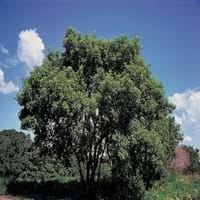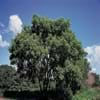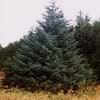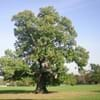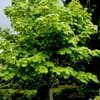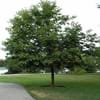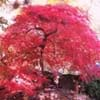What is
Life Span
Perennial
Perennial
Type
Tree
Flowering Plants, Fruits, Trees
Origin
North America, United States, Northeastern United States, Mid-Atlantic United States, Southeastern United States, North-Central United States, Central United States, South-Central United States, Texas, Canada
Anatolia, Asia, Europe, Iran, Maghreb, Morocco, Norway, The Hiamalayas
Types
Ash leaves maple, Acer negundo califormicum tehachapi, Acer negundo Flamingo
Flowering Cherries, Sour Cherries, Sand Cherries, Sweet Cherries, Capulin Cherries
Number of Varieties
Not Available
100
99+
Habitat
Anthropogenic, Floodplains, Forests, Shores of rivers or lakes, Terrestrial
Forest edges, Wild, Woods
USDA Hardiness Zone
2-8
4-8
AHS Heat Zone
8-3
10-1
Sunset Zone
A2, A3, 1a, 1b, 2a, 2b, 3a, 3b, 4, 5, 6, 7, 8, 9, 10, 12, 13, 14, 15, 16, 17, 18, 19, 20, 21, 22, 23, 24
4, 5, 6, 7, 15, 16, 17
Habit
Oval or Rounded
Upright/Erect
Information
Plant Size
Minimum Height
2,438.40 cm
15
17.50 cm
99+
Minimum Width
1,524.00 cm
9
17.50 cm
99+
Plant Color
Flower Color
Red, Yellow green, Dark Red
White
Flower Color Modifier
Bicolor
Not Available
Fruit Color
Green, Tan
Red
Leaf Color in Spring
Green, Light Green
Dark Green
Leaf Color in Summer
Green
Orange
Leaf Color in Fall
Yellow, Yellow green, Brown
Orange
Leaf Color in Winter
Not Available
Orange
Shape
Leaf Shape
Broadly Ovate
Oblong
Thorns
No
No
Season
Plant Season
Spring, Fall
Spring, Summer
Growing Conditions
Sunlight
Full Sun, Partial Sun, Partial shade
Full Sun, Partial shade
Growth Rate
Fast
Medium
Type of Soil
Clay, Loam, Sand
Loamy, Well drained
The pH of Soil
Acidic, Neutral, Alkaline
Slightly Acidic
Soil Drainage
Average
Average
Bloom Time
Early Spring, Spring
Early Spring, Spring
Repeat Bloomer
No
No
Tolerances
Wet Site, Pollution, Drought, Soil Compaction
Heat And Humidity, Not Available
Care
Where to Plant?
Ground
Ground
How to Plant?
Rooted stem cutting, Seedlings
Grafting, Seedlings, Transplanting
Plant Maintenance
Medium
Medium
Watering Plants
Watering Requirements
Average Water Needs, Needs watering once a week
Never Over-water, Over-watering can cause leaf problems or root diseases, Prefer drip-irrigation instead of Over-head watering, Water twice a day in the initial period
In Summer
Lots of watering
Lots of watering
In Spring
Moderate
Moderate
In Winter
Average Water
Average Water
Soil
Soil pH
Acidic, Neutral, Alkaline
Slightly Acidic
Soil Type
Clay, Loam, Sand
Loamy, Well drained
Soil Drainage Capacity
Average
Average
Sun Exposure
Full Sun, Partial Sun, Partial shade
Full Sun, Partial shade
Pruning
Prune every year, Prune in early spring, Prune in late winter, Remove branches, Remove damaged leaves, Remove dead branches, Remove dead leaves, Remove dead or diseased plant parts
Don't prune in the fall, Prune if you want to improve plant shape, Prune in late winter, Remove dead or diseased plant parts, Remove deadheads
Fertilizers
All-Purpose Liquid Fertilizer
All-Purpose Liquid Fertilizer
Pests and Diseases
Red blotch
Aphids, Bacterial Canker, Black Knot, Brown Rot, Caterpillars
Plant Tolerance
Drought, Pollution, Soil Compaction, Wet Site
Drought
Facts
Flowers
Yes
Yes
Flower Petal Number
Not Available
Not Available
Fruits
Showy Fruit
No
Yes
Edible Fruit
No
Yes
Fragrance
Fragrant Flower
No
Yes
Fragrant Fruit
No
Yes
Fragrant Leaf
Yes
No
Fragrant Bark/Stem
No
No
Showy Foliage
No
No
Showy Bark
No
Yes
Foliage Texture
Medium
Not Available
Foliage Sheen
Matte
Not Available
Evergreen
No
Yes
Invasive
Sometimes
No
Self-Sowing
Yes
No
Attracts
Aphids, Birds, Squirrels
Birds
Allergy
Asthma, Runny nose, Skin irritation
Swelling in the face
Benefits
Uses
Aesthetic Uses
Bonsai
Showy Purposes
Beauty Benefits
Not Available
Not Available
Edible Uses
Yes
Yes
Environmental Uses
Air purification, Shadow Tree, Wildlife
Air purification
Plant Benefits
Medicinal Uses
Antidote, Antiemetic
Arthritis, Gout, Kidney problems, Rheumatoid arthritis, Swelling
Part of Plant Used
Flowers, Fruits, Leaves, Seeds
Flowers, Fruits
Other Uses
Can be made into a herbal tea, Decoration Purposes, Edible syrup, Used as essential oil, Used As Food, Used as Ornamental plant, Wood log is used in making fences
Wood is used for making furniture
Used As Indoor Plant
No
No
Used As Outdoor Plant
Yes
Yes
Garden Design
Screening / Wind Break
Not Available
Scientific Name
Botanical Name
ACER negundo
Prunus avium
Common Name
Ash-Leaved Maple, Boxelder
Cherry Tree
In Hindi
Boxelder tree
चेरी का पेड़
In German
Boxelder Baum
Kirschbaum
In French
arbre boxelder
Cerisier
In Spanish
árbol boxelder
Cerezo
In Greek
κουφοξυλιά δέντρο
κερασιά
In Portuguese
árvore Boxelder
árvore de cereja
In Polish
Boxelder drzewo
wiśniowe drzewo
In Latin
Boxelder ligno
Cherry
Classification
Kingdom
Plantae
Plantae
Phylum
Magnoliophyta
Magnoliophyta
Class
Magnoliopsida
Magnoliopsida
Order
Sapindales
Rosales
Family
Aceraceae
Rosaceae
Genus
Acer
Prunus
Clade
Angiosperms, Eudicots, Rosids
Angiosperms, Eudicots, Rosids
Tribe
Not Available
Not Available
Subfamily
Not Available
Not Available
Number of Species
Not Available
Not Available
|
||
|
||
|
